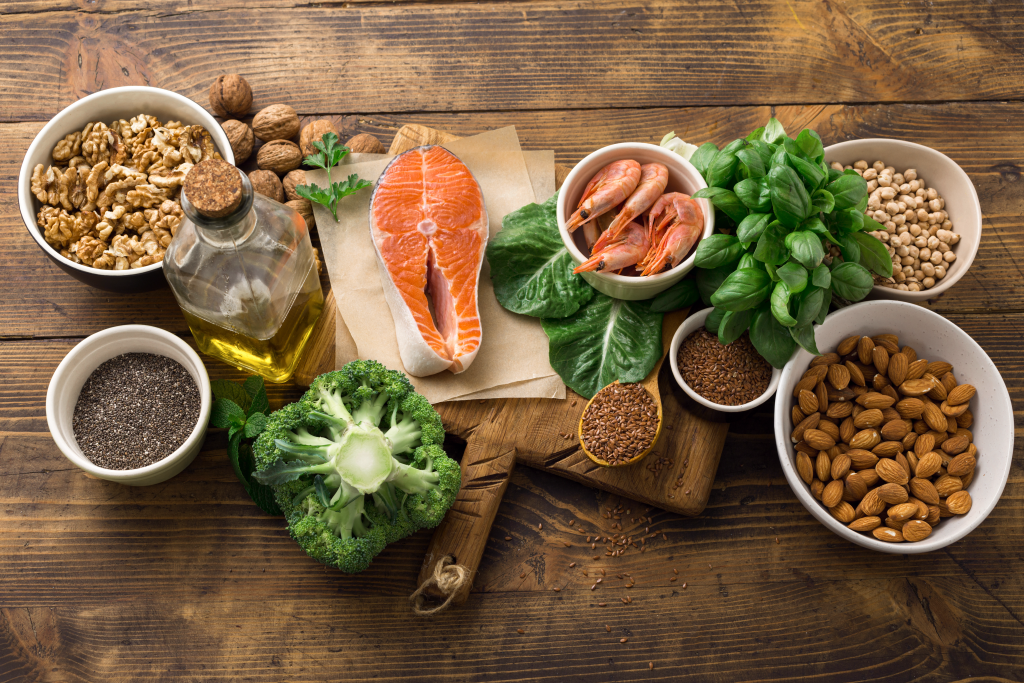In a world where the pursuit of well-being reigns supreme, the role of nutrition in shaping our mental and physical health has garnered significant attention. Recent studies have underscored the profound impact of diet on overall well-being, highlighting the transformative potential of certain foods in enhancing mood, boosting energy levels, and promoting a sense of vitality. From vibrant fruits to nutrient-rich greens, the realm of healthy foods offers a treasure trove of nourishment that not only fuels the body but also uplifts the spirit.
Drawing from a plethora of scientific research, experts have identified a myriad of wholesome foods that possess remarkable healing properties, capable of making individuals feel better both inside and out. Among these nutritional powerhouses are:
1. Leafy Greens: Spinach, kale, and other leafy greens are rich in vitamins, minerals, and antioxidants, which have been shown to reduce inflammation and promote brain health. Incorporating these greens into meals can contribute to enhanced cognitive function and a greater sense of vitality.
2. Berries: Bursting with flavor and packed with antioxidants, berries such as blueberries, strawberries, and raspberries offer a potent dose of health-boosting nutrients. Studies suggest that regular consumption of berries may improve mood, cognition, and overall well-being, making them a delightful addition to any diet.
3. Fatty Fish: Salmon, mackerel, and sardines are renowned for their high omega-3 fatty acid content, which plays a crucial role in brain health and emotional well-being. Incorporating fatty fish into meals provides essential nutrients that support mental clarity and emotional resilience, fostering a sense of calm and contentment.
4. Nuts and Seeds: Almonds, walnuts, chia seeds, and flaxseeds are rich sources of healthy fats, protein, and fiber, offering a myriad of benefits for both physical and mental health. Regular consumption of nuts and seeds has been linked to improved mood, reduced stress levels, and enhanced cognitive function, making them an excellent snack choice for nourishing the body and mind.
5. Whole Grains: Whole grains such as quinoa, brown rice, and oats are packed with fiber, vitamins, and minerals, providing sustained energy and promoting feelings of satiety. Incorporating whole grains into meals can help stabilize blood sugar levels, regulate mood, and enhance overall well-being, making them a staple in a balanced diet.
As individuals increasingly prioritize holistic approaches to health and wellness, the significance of nutrition in fostering vitality and resilience cannot be overstated. By embracing a diet rich in nutrient-dense foods such as leafy greens, berries, fatty fish, nuts, seeds, and whole grains, individuals can nourish their bodies and minds, unlocking the transformative power of healthy eating.
In the quest for optimal well-being, the journey begins on the plate, where every meal presents an opportunity to nourish the body, elevate the spirit, and embark on a path toward lasting vitality. As science continues to unravel the intricate connections between diet and health, one thing remains abundantly clear: the healing power of healthy foods extends far beyond mere sustenance, offering a beacon of hope and resilience in an ever-changing world.
References
- Harvard T.H. Chan School of Public Health. “The Nutrition Source – Vegetables and Fruits.” Harvard T.H. Chan School of Public Health, Harvard University, www.hsph.harvard.edu/nutritionsource/what-should-you-eat/vegetables-and-fruits/. Accessed 23 Mar. 2024.
- Mayo Clinic Staff. “Omega-3 in Fish: How Eating Fish Helps Your Heart.” Mayo Clinic, Mayo Foundation for Medical Education and Research, 1 May 2020, www.mayoclinic.org/diseases-conditions/heart-disease/in-depth/omega-3/art-20045614. Accessed 23 Mar. 2024.
- National Institute on Aging. “Eating Patterns and Meal Planning.” National Institute on Aging, U.S. Department of Health and Human Services, www.nia.nih.gov/health/eating-patterns-and-meal-planning. Accessed 23 Mar. 2024.
- Office of Dietary Supplements – National Institutes of Health. “Omega-3 Fatty Acids.” U.S. Department of Health & Human Services, National Institutes of Health, ods.od.nih.gov/factsheets/Omega3FattyAcids-Consumer/. Accessed 23 Mar. 2024.
- University of Rochester Medical Center. “Whole Grains.” University of Rochester Medical Center, http://www.urmc.rochester.edu/encyclopedia/content.aspx?contenttypeid=19&contentid=WholeGrains. Accessed 23 Mar. 2024.


